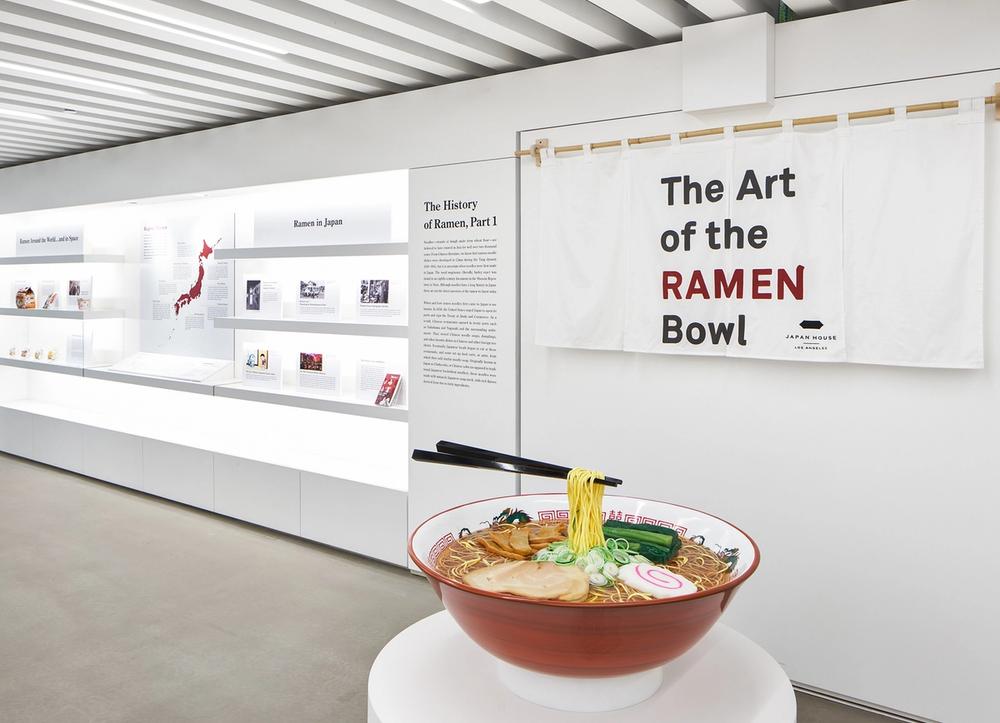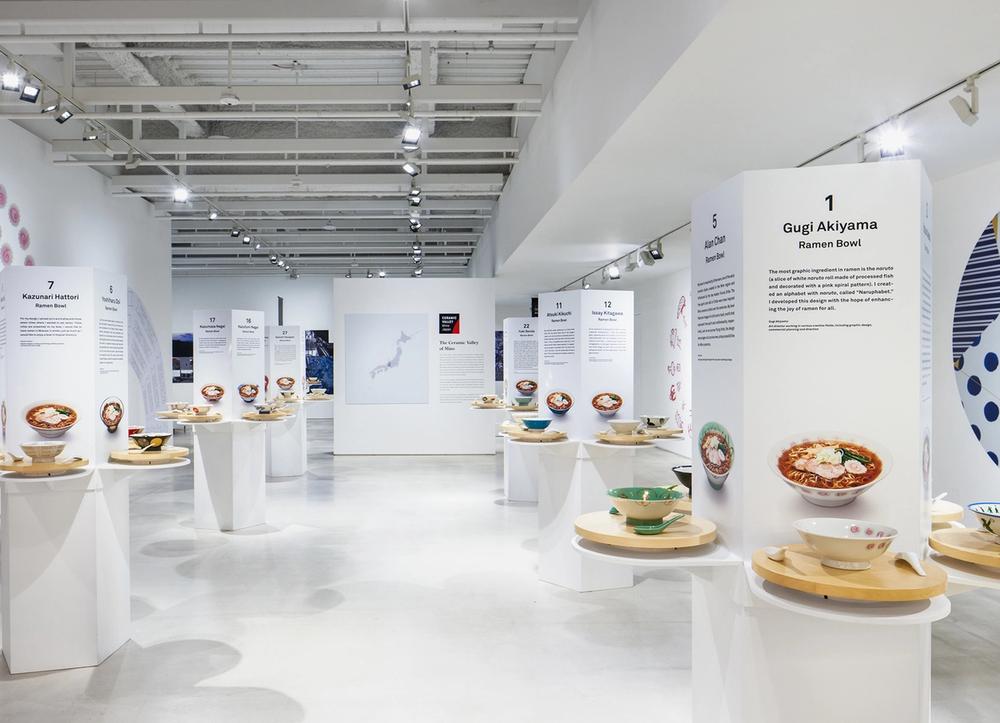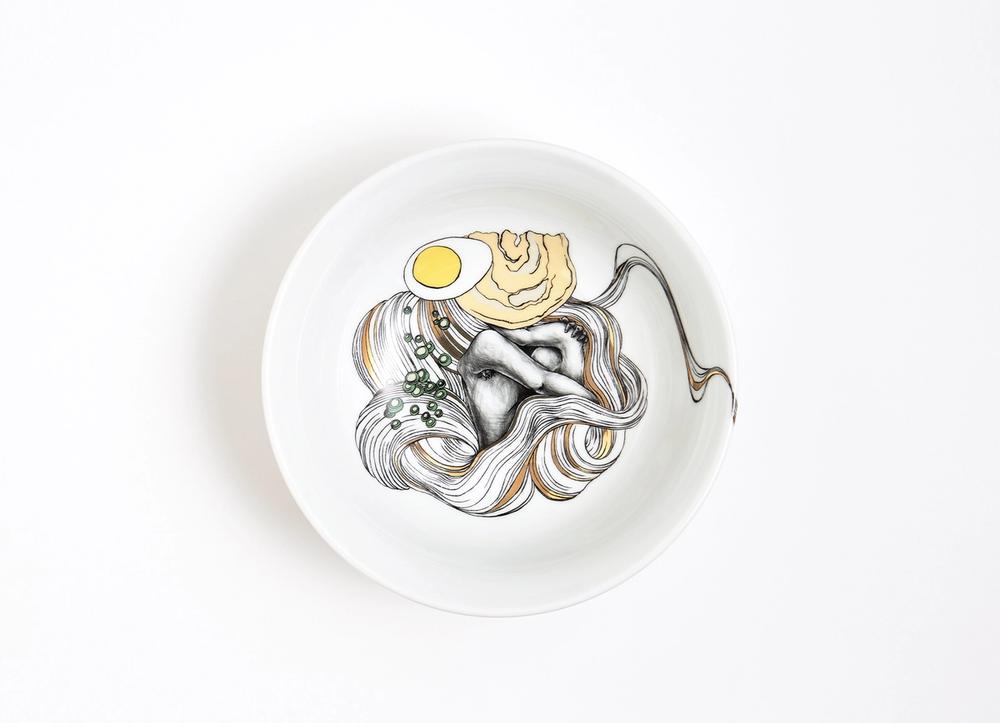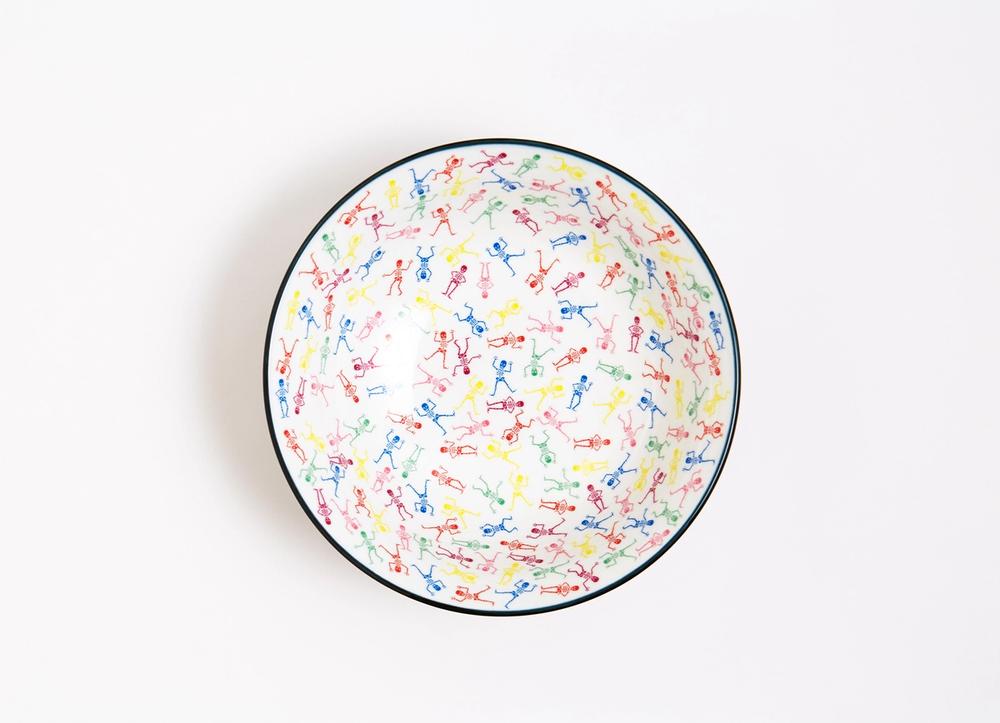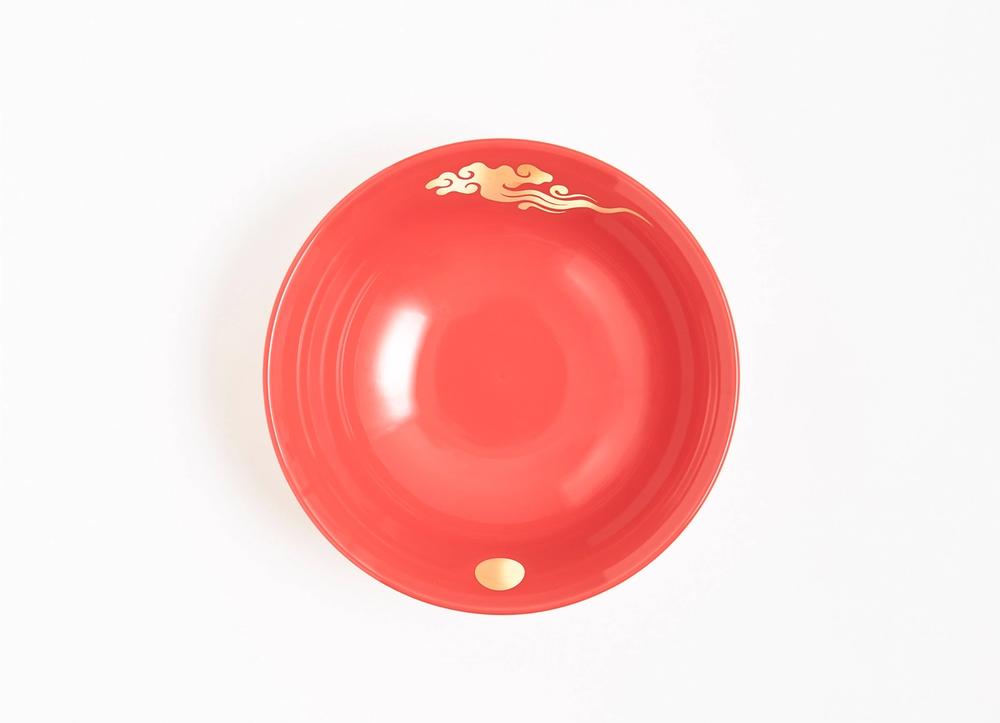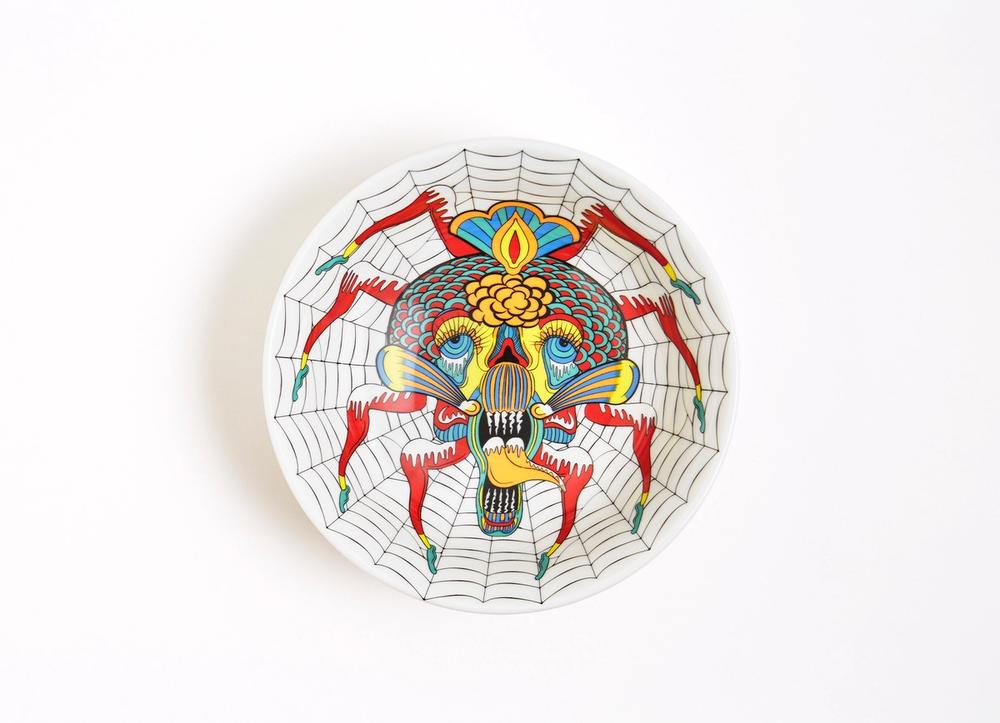In Los Angeles, an Exhibition Zeroes In on the Ramen Bowl
Eating ramen is a multisensory experience: the fragrant steam coming off of the broth, the slurping sound of enjoying the noodles, the cozy heat felt upon touching the bowl. The latter object is the subject of an exhibition called “The Art of the Ramen Bowl” (March 18–July 5) that’s on view at the Los Angeles location of Japan House, an initiative with additional hubs in London and São Paulo that was created by the Ministry of Foreign Affairs of Japan to foster awareness and appreciation of the country through a diverse range of programming. Graphic designer Taku Satoh and writer and editor Mari Hashimoto, deputy director of Tokyo’s Eisei Bunko Museum, curated the show, which was first mounted at Gallery Design 1953 inside Tokyo’s Matsuya Ginza department store in 2014. (The presentation at Japan House L.A. is its first in the United States.) The show features 30 donburi, the porcelain receptacles in which ramen is traditionally served, and renge, the compact, teardrop-shaped spoons that often accompany them, made by 30 leading artists, architects, and designers. Here, the dishware is positioned as vessels for not only the beloved dish, but for history, culture, and self-expression as well.
The exhibition’s ode to ramen, a street food brought to Japan from China in the mid-1800s, considers the dish’s many facets. Viewers learn about the origins and composition of the soup, which can take on a number of flavors, styles, and ingredients, as well as the variety of bowls and utensils created across time to accompany it—such as the tableware made in Mino, a city in Japan’s Gifu Prefecture that has been a ceramics hub for more than 500 years and currently produces nearly 90 percent of the country’s donburi. (All pieces in the show were fabricated there, including more than a dozen bowls made specifically for the L.A. presentation.)
Takes on the bowl span the traditional to the experimental: Satoh, the show’s co-curator, adorned one with dragons and a border of multicolored square spirals, while an iteration by artist Hisashi Tenmyouya is embellished with his signature markings, which he calls Neo-Nihonga, that put a contemporary twist on traditional Japanese-style painting. Drawings by Tabaimo, an artist whose work often explores themes of isolation and uncertainty, blanket another bowl that, when filled with ramen and eaten from, gradually reveals male and female body parts (feet, torsos, hands, and arms) and alludes to the progressing phases of a relationship.
Other pieces border on the surreal. Pop artist Keiichi Tanaami covered a vessel in an image of a skull-headed spider—a reference to his memory of watching one drown in his ramen, deterring him from the food thereafter. Most striking is a giant soup-filled ramen bowl by Iwasaki Mokei, a celebrated Japanese manufacturer of ornate food replicas that was founded in 1932. The elaborate resin, PVC, and reinforced-plastic sculpture, which depicts Tokyo-style shoyu ramen, magically captures the allure of the real thing.
A robust roster of public programming offers further context around ramen, along with opportunities to partake of the soup itself. Events include Delicious Design (March 22), a discussion among the exhibition’s curators about organizing the show and the relationship between dishware and design, and The Ceramics of Mino (April 5), a lecture by Morgan Pitelka, a professor of history and Asian studies at the University of North Carolina at Chapel Hill, on the evolution of the region’s pottery. From May through July, a ramen pop-up series, featuring to-be-announced participants, will take place in the building’s restaurant space. However you decide to explore the dish—with your mind, body, or both—the exhibition offers plenty of ways to refuel.

